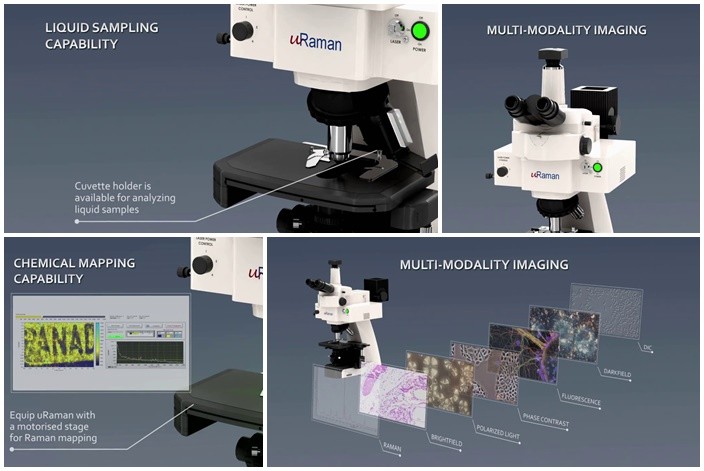How To Handle A Sample with Strong Absorbance in UV & Vis Regions?
The laser source with 532nm wavelength is common in a Raman spectrometer, say, the Raman spectrometer series of ACTTR Technology. However, some samples have strong absorption behavior in the UV and Visible region. When some crystal has 99.99% absorption behavior, how one can handle this situation?
In fact, in the wavelength range of laser, which has strong absorption is helpful for Raman spectroscopy. If one can control the energy that applied on the molecule within a proper range, and the sample obtained actual exciting energy, will be able to greatly improve the strength of Raman effect, and showed a clear signal in the spectrum, a phenomenon called Resonant Raman. In applications where the measurement of pollutants, Resonant Raman spectroscopy can measure the ppm - ppb levels of trace contaminants samples.
However, in the case of such a high absorption, fluorescence can easily appear and enhance significant background of fluorescence. The detector will reach the saturation, and then the drowned the signal you want to measure. To solve this problem, a quick way is to try to reduce the laser power and reduce the incidence of fluorescence. By reducing the laser power, it allows the prominent peak of the Raman spectrum from the fluorescent background. Otherwise, allowing the sample to be closer to the metal component is another choice. It is the reason that Surface-enhanced Raman Spectroscopy (SERS) can suppress fluorescence and enhance Raman Resonance, finally solve the problem of fluorescence issues in Resonant Raman spectroscopy.
Some customers asked us, why didn't you mention about background subtraction method? We did not recommend it , because Raman scattering is different from the absorption spectroscopy methods, when it is often difficult to be quantified. Therefore, in some Raman spectrum there is not even a mark indicating the Y-axis. This is different from the absorption spectrum which can quantify the percentage of absorption.
There is another method, baseline correction. By using baseline correction algorithm, one can remove the fluorescence background. There are three common baseline correction algorithm, they are, Orthogonal Basis (OB), Fuzzy Optimal Associative Memory (FOAM), Polynomial Fitting (PF).
ACTTR Technology brought to you the uRaman Raman spectrometer series. It is not only with compact size, but also accept the stacked structure and operate different wavelengths of laser beams to generate Resonant Raman. In addition, we also provide you the optional Cuvette products for the detection of pollutants. And the nano gold chip (for red to NIR region) and the nano silver chip (for blue infrared region). uRaman is a wonderful instrument in various experiment requirements!

ACTTR Technology brought to you the high quality Raman Spectrometer. Contact ACTTR for more information.


